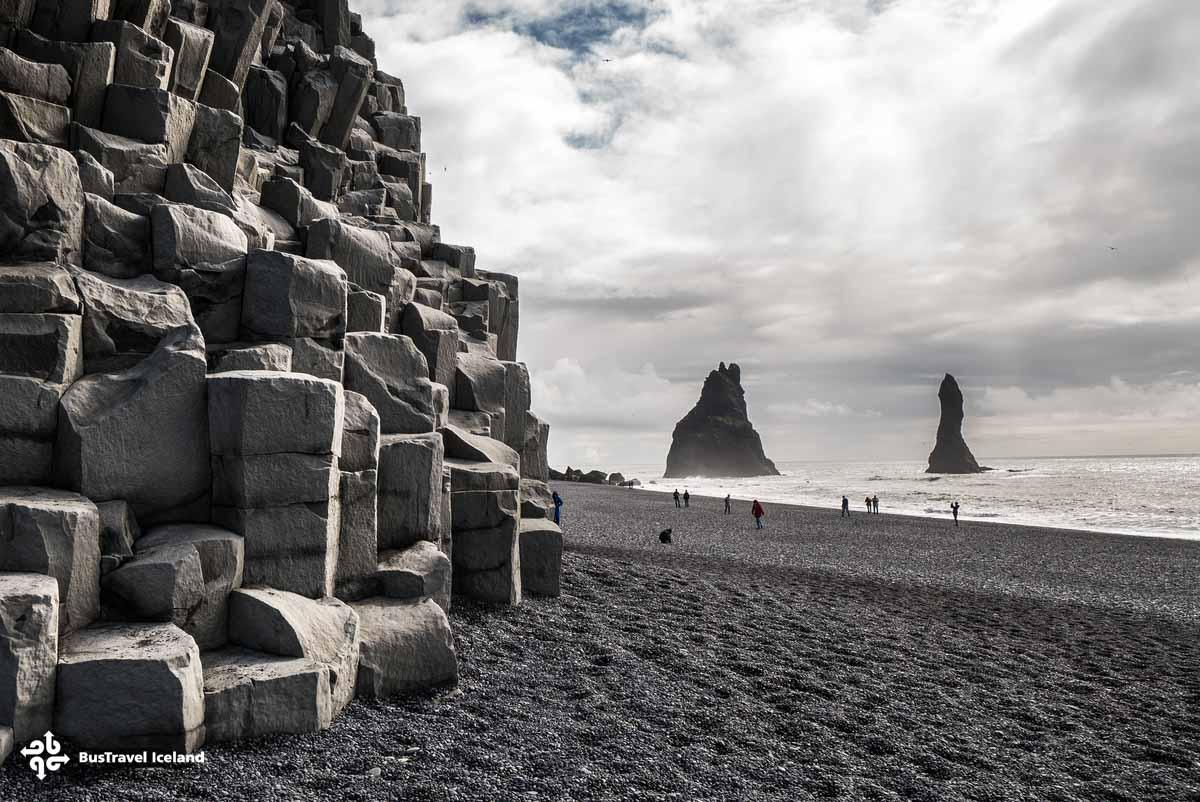Exploring the Wonders of Reynisfjara Beach

Introduction
Reynisfjara Beach, located on the southern coast of Iceland, is famed for its striking black sands and dramatic basalt columns. As a significant geological marvel, it draws thousands of visitors each year, eager to experience its breathtaking landscapes and unique natural features. The importance of Reynisfjara lies not only in its natural beauty but also in its role as a vital part of Iceland’s tourism industry, making it an essential destination for travellers.
Geological Features and Attractions
The beach stretches approximately 1.5 kilometres and is renowned for its fine, dark volcanic sand, which is a product of the surrounding lava flows. One of the key attractions is the Reynisdrangar sea stacks, towering formations that rise dramatically from the ocean. According to local legend, these are trolls turned to stone by the rising sun, adding a layer of myth to the beach’s allure.
Another notable feature of Reynisfjara is its striking basalt columns, which form impressive geometric patterns along the coastline. These columns were created by the cooling and crystallisation of lava, showcasing the incredible geological processes that have shaped Iceland’s landscape over millennia.
Safety and Environmental Concerns
Despite its beauty, Reynisfjara Beach is not without its dangers. The waves can be unpredictable and powerful, leading to strong riptides. Local authorities have placed warning signs and regularly advise visitors to maintain a safe distance from the water’s edge to avoid accidents. Additionally, there are ongoing environmental efforts to preserve the beach’s unique ecosystem, as increased tourism can pose a threat to its natural beauty.
Visitor Information
Reynisfjara Beach is accessible year-round, with peak visitor numbers occurring during the summer months. Facilities such as restrooms and parking areas are available nearby, and several local tour operators offer guided tours to the beach, enhancing the experience with insights into its history and geological significance. Visitors are encouraged to educate themselves on both the natural and cultural importance of the site to promote responsible tourism.
Conclusion
Reynisfjara Beach represents a unique intersection of natural beauty, geological wonder, and cultural lore. Its striking landscape, combined with tales of mythology, makes it a must-visit site for anyone travelling to Iceland. As tourism continues to grow, responsible travel practices will be crucial in ensuring that the beach remains a stunning destination for generations to come. Whether standing on the black sands or gazing at the sea stacks, Reynisfjara Beach leaves a lasting impression on all who visit.
